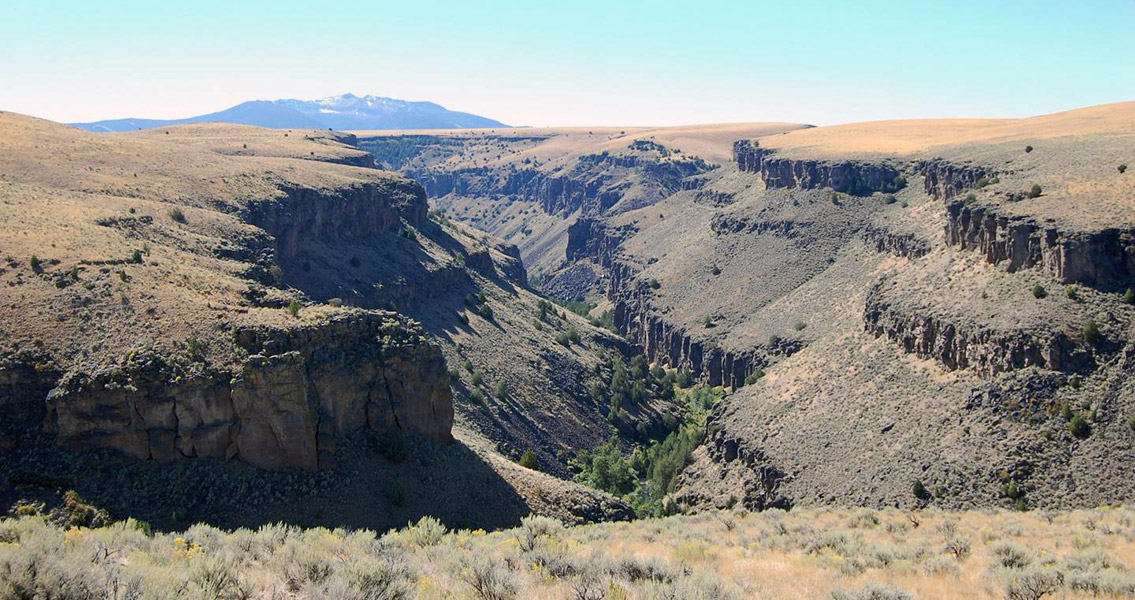<![CDATA[An ongoing research project is looking into the possibility that the Yellowstone super-volcano was nothing more than the 'dwindling member' of a much older, larger and fiercer volcanic system. For millions of years the Snake River Plain was a hotbed of volcano activity as North America shifted southwestward. As the continent drifted the earth's crust was pulled apart, forming a large depression which became the Snake River Plain, in what is now Idaho. As recently as a million years ago the area was struck by super volcanic eruptions. Now, a new study by an international team of researchers suggests that a series of eruptions at Central Snake River Plain which took place between 16 and 8 millions years ago could have been more powerful than the colossal eruptions known to have taken place at Yellowstone. Led by Dr Tom Knott, Professor Mike Branney and Dr Marc Reichow, from the University of Leicester's Department of Geology's Volcanology Group, the team's research, published by the Geological Society of America, suggests that although the number of volcanic eruptions originating in the Central Lake River Plain was less than typically believed, the twelve eruptions that did take place were significantly larger than suggested by previous research. "While it is well-know that Yellowstone has erupted catastrophically in recent times perhaps less widely appreciated is that these were just the latest in a protracted history of numerous catastrophic super-eruptions that have burned a track along the Snake River eastwards from Oregon to Yellowstone from 16 Ma to present." Explained Dr. Knott, in a press release from the University of Leicester. A multi-technique approach, involving whole rock and mineral chemistries, palaeomagnetic data, and radio-isotopic dates, was deployed by the team. It allowed them to create a fingerprint of individual eruption deposits which they could correlate over a massive region: up to 1000 km2. The correlation process saw the team drastically reduce the number of eruptions thought to have occurred in the region by over fifty percent. According to the team's study, the scale of the twelve eruptions was incredible. One, defined as the Castleford Crossing eruption, took place roughly 8.1 million years ago and the team believe the volume of material released from the volcano exceeded 1,900 km3. The volcanic sheet of the eruption covers over 14,000 km2 in Southern Idaho, with the caldera of the volcano more than 1.3km thick. "The size and magnitude of this newly defined eruption is as large, if not larger, than better known eruptions at Yellowstone," explained Dr. Knot "it is just the first in an emerging record of newly discovered super-eruptions during a period of intense magmatic activity between 8 and 12 million years ago." The team's research also shows that the 100km wide Snake River Plain Valley was formed by intense hotspot magmatism triggering major crustal subsistence. The study is just one part of a long research project to reassess the volcanic record of the region. Yellowstone, one of the largest volcanoes on the planet, last erupted approximately 174,000 years ago. Still an active volcano, scientists monitoring it feel another eruption is unlikely to take place within the next thousand years. The recently published paper by the University of Leicester is part of a longer project analysing whether the infamous super-volcano is in fact nothing more than the remnants of a much larger and more violent volcano system from the Mid-Miocene period (12-8 million years ago). For more information: www.crossref.org Image courtesy of Marc Reichow, University of Leicester ]]>
Super Volcanoes in Idaho More Powerful Than Yellowstone
